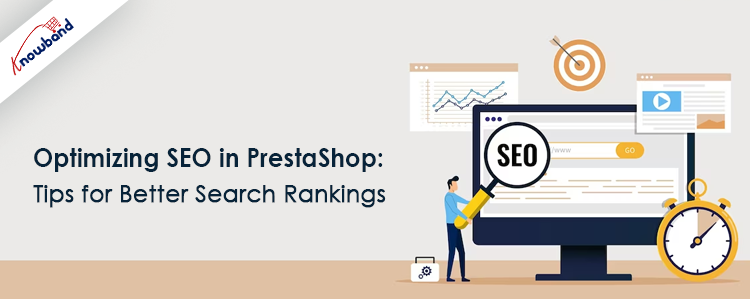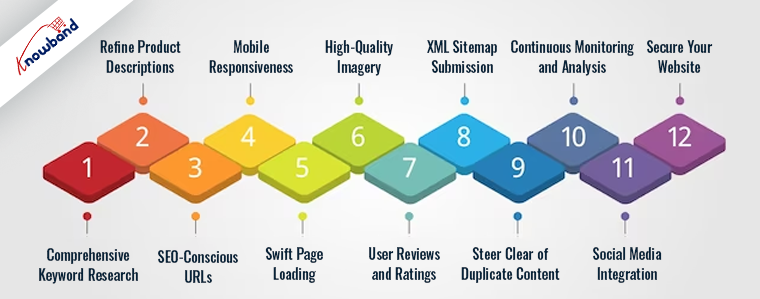Running a successful online store hinges on one critical factor – the ability to showcase your products to potential customers. This is where Search Engine Optimization (SEO) plays a pivotal role.
In the realm of e-commerce, PrestaShop is a favored choice, renowned for its versatility and extensive feature set. Nevertheless, like any other platform, it necessitates meticulous SEO optimization to secure a prominent position in search engine rankings.
In this article, we will delve into some essential SEO strategies tailored to enhance the search visibility of your PrestaShop store and draw in more organic traffic.
1. Comprehensive Keyword Research:
Keyword research serves as the cornerstone of an effective SEO strategy. Initiate the process by identifying pertinent keywords and phrases that your target audience is likely to employ when searching for the products you offer. Tools such as Google Keyword Planner and SEMrush prove invaluable for discovering these keywords. Skillfully integrating them into your product titles, descriptions, and content can markedly augment the search engine rankings of your PrestaShop store.
2. Refine Product Descriptions:
Crafting unique and compelling product descriptions not only benefits your customers but also appeals to search engines. Abstain from using manufacturer-provided descriptions, which are often duplicated across multiple websites. Instead, create original, informative descriptions that incorporate your target keywords. Emphasize product attributes, advantages, and any distinctive selling points.
3. SEO-Conscious URLs:
PrestaShop permits you to customize your URLs. Optimize them for SEO by incorporating pertinent keywords and keeping them concise. For instance, replace “/product123” with “/red-womens-running-shoes.” Moreover, you can also employ Knowband’s Prestashop SEO Optimizer addon to ensure SEO-friendly page URLs.
4. Mobile Responsiveness:
Google prioritizes mobile-friendly websites in its search rankings due to the larger user base on mobile devices. Consequently, as a PrestaShop administrator, it’s imperative to ensure that your store is responsive and delivers an exceptional user experience on mobile devices. Utilize Google’s Mobile-Friendly Test to assess your site’s mobile optimization.
5. Swift Page Loading:
Site speed constitutes a pivotal ranking factor. Slow-loading pages can provoke user frustration and lead to high bounce rates. To circumvent such pitfalls, leverage tools like Google PageSpeed Insights to identify and rectify speed-related issues. Furthermore, you can optimize load times by compressing images, enabling browser caching, and selecting a dependable hosting provider.
6. High-Quality Imagery:
In the realm of e-commerce, images play an integral role. Employ high-quality images for your products and ensure that you include alt text containing pertinent keywords. Alt text not only enhances SEO but also enhances site accessibility.
7. User Reviews and Ratings:
Encourage customers to provide reviews and ratings for your products. Positive feedback not only bolsters your credibility but also contributes to SEO. Google often displays star ratings in search results, enticing higher click-through rates.
8. XML Sitemap Submission:
PrestaShop automates the generation of XML sitemaps. Submit your sitemap to Google Search Console to ensure efficient crawling and indexing by search engines. This expedites the appearance of your pages in search results.
9. Steer Clear of Duplicate Content:
Duplicate content can compromise your SEO endeavors. To circumvent such scenarios, employ canonical tags to specify the preferred version of a page when multiple similar pages exist. Additionally, set up 301 redirects for outdated URLs to mitigate duplicate content issues.
10. Continuous Monitoring and Analysis:
Regularly monitor your website’s performance utilizing tools like Google Analytics and Google Search Console. Track keyword rankings, organic traffic, and user behavior. This data yields valuable insights into what’s effective and where improvements are warranted.
11. Social Media Integration:
Integrate your PrestaShop store with social media platforms. Sharing your products on social media amplifies visibility, boosts traffic, and can lead to enhanced search engine rankings.
12. Secure Your Website:
Google favors secure websites with HTTPS. Ensure that your PrestaShop store employs an SSL certificate to encrypt data and safeguard customer information.
In Conclusion:
In summary, optimizing SEO in PrestaShop is pivotal for elevating your online store’s search rankings and attracting organic traffic. By adhering to these strategies and staying abreast of SEO best practices, you can bolster the visibility of your PrestaShop store in search engine results pages (SERPs) and ultimately elevate your e-commerce sales.
Bear in mind that SEO is an ongoing endeavor. Continuously refine your strategy, adapt to shifts in search engine algorithms, and stay ahead of the competition to maintain and enhance your search rankings.




